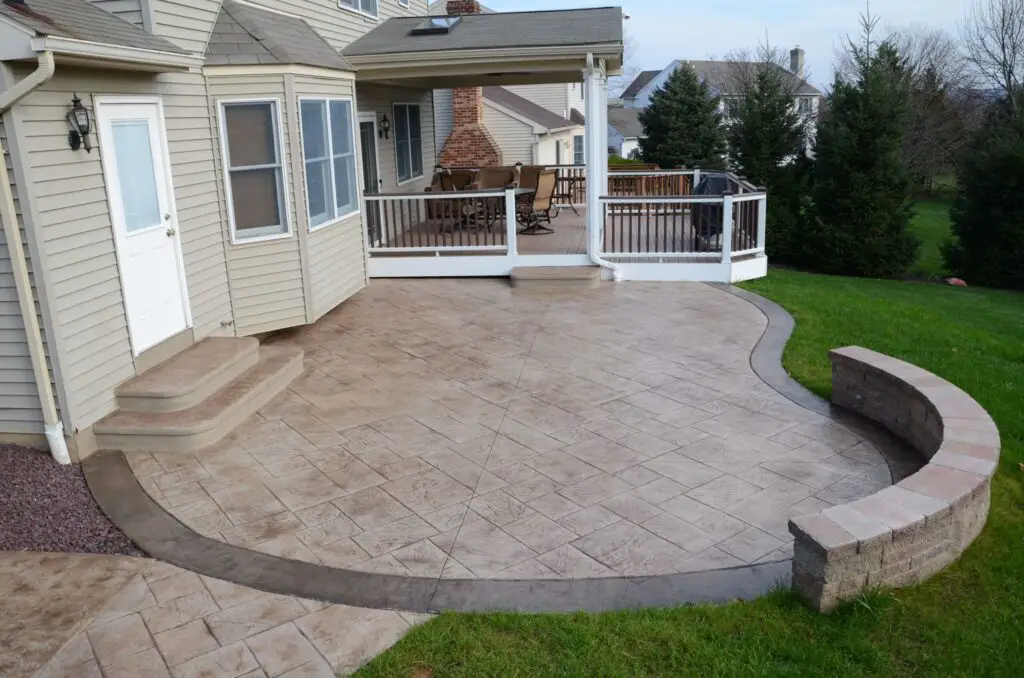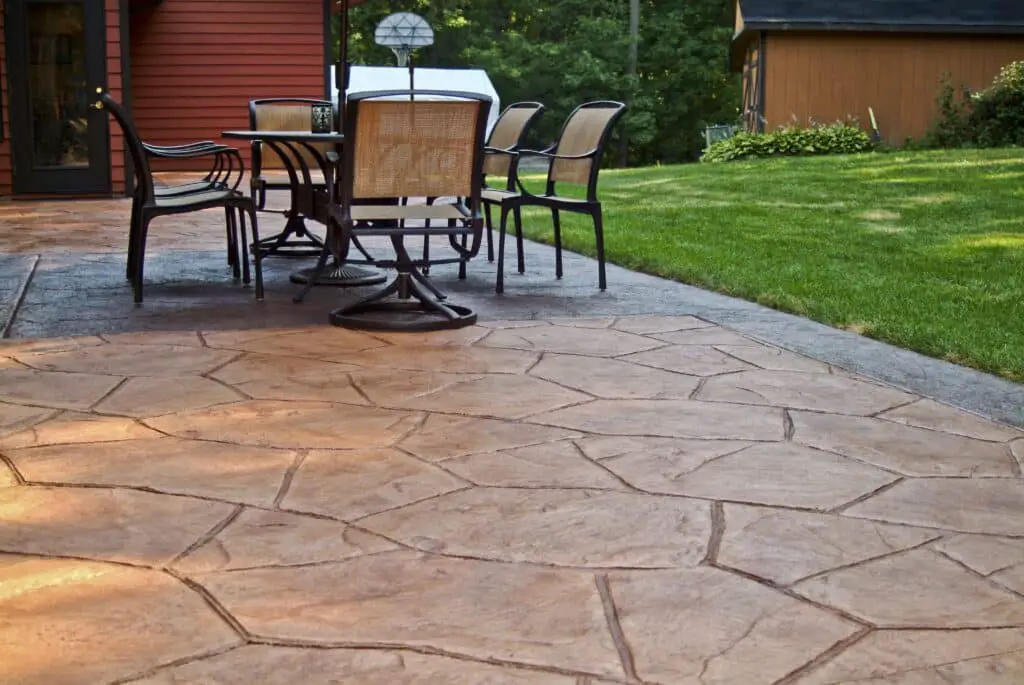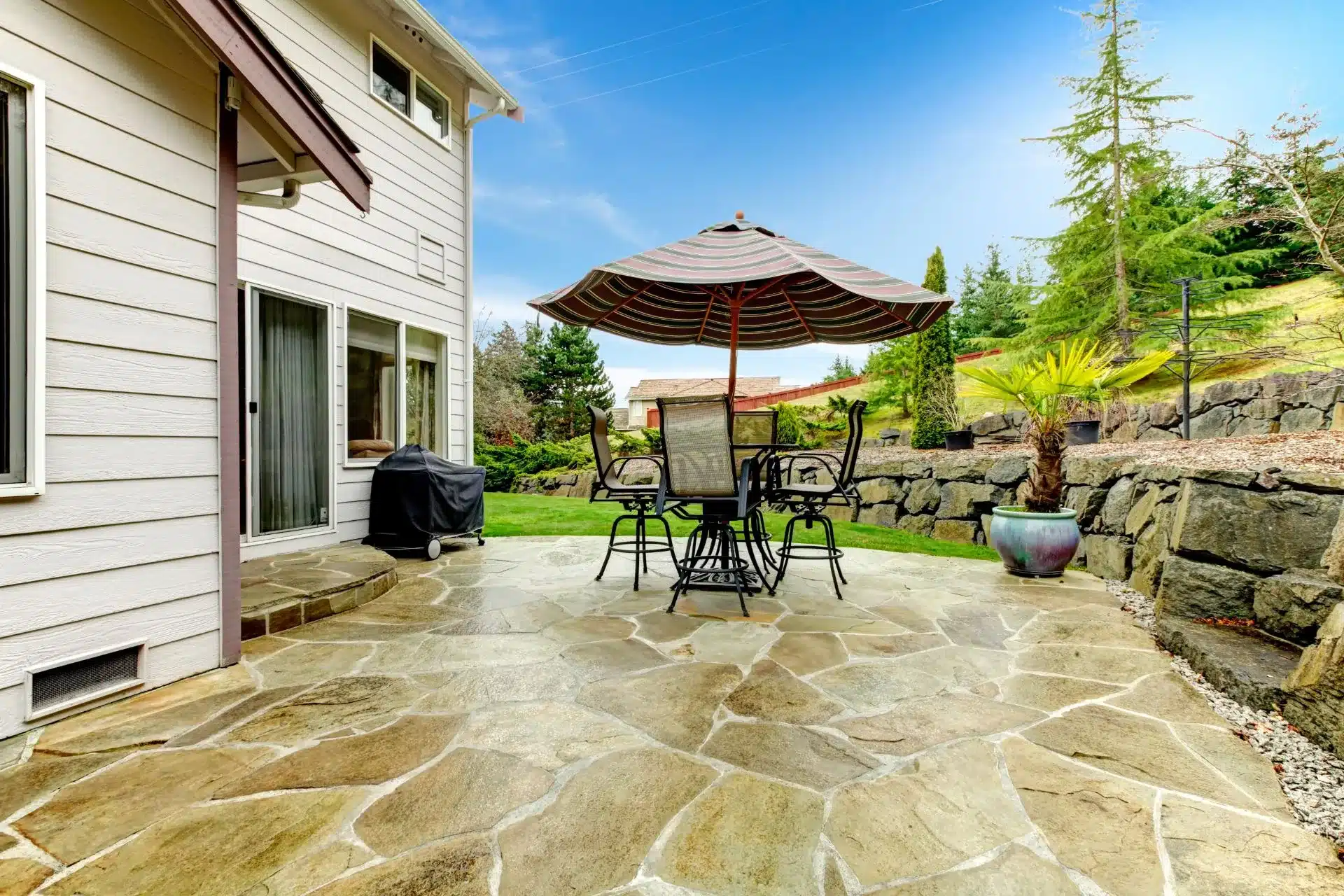How Much To Extend Concrete Patio
Introduction
How Much To Extend Concrete Patio: Whether you want to create more space for outdoor entertaining or simply want to enhance the functionality of your outdoor living area, extending your concrete patio can be a great solution. By adding on to your existing patio, you can create a seamless transition between indoor and outdoor spaces, and increase the value and appeal of your home.
Extending a concrete patio is a relatively straightforward process that can be completed by a professional contractor or even a skilled DIY enthusiast. The first step in extending your patio is to determine the size and shape of the extension. Consider how you plan to use the space and what features you want to incorporate, such as a seating area, outdoor kitchen, or fire pit. This will help you determine the dimensions and layout of the extension.
Once you have a clear idea of what you want, the next step is to prepare the existing patio door for the extension. This may involve removing any obstacles or obstructions, such as plants, furniture, or structures, and cleaning the surface of the concrete. It’s important to ensure that the existing patio is in good condition and free from any cracks or damage before extending it.
When it comes to extending the concrete patio itself, there are a few different options to consider. One option is to pour new concrete directly onto the existing patio, creating a seamless and uniform surface. Another option is to use pavers or tiles to create a distinct area for the extension, which can add visual interest and texture to your outdoor space. The choice will depend on your personal preference, budget, and the overall design aesthetic you want to achieve.

What is the cheapest way to extend a concrete patio?
Homeowners generally prioritize cost when extending a concrete patio. You may get the results you want without breaking the bank with various affordable solutions. These economical ideas might help you expand your patio for outdoor entertaining or improve its appearance.
Pavers are an affordable method to extend a concrete patio. Pavers are popular since they’re cheap and straightforward to install. They come in many shapes, sizes, and colors, so you may design your patio. Pavers are practical and cost-effective since they can be simply removed and replaced if broken or soiled.
Gravel is another inexpensive way to extend a concrete patio. Gravel is cheap and easy to lay over concrete. The natural and rustic style makes it a popular choice for homeowners who desire a more casual outdoor setting. Water can drain through gravel, preventing flooding and water damage.
Concrete stain or paint can prolong your patio on a budget. Adding color and texture to concrete is affordable with concrete stain. It can be applied in different colors and patterns to customize your patio.
How do you extend a concrete patio with concrete?
Extending a concrete patio with concrete is a great way to increase the usable space in your outdoor area. Whether you want to create a larger seating area, add a barbecue or fire pit, or simply have more room for outdoor activities, extending your patio with concrete can provide the solution you need. In this article, we will discuss the steps involved in extending a concrete patio with concrete.
Step 1: Prepare the existing patio
The first step in extending a concrete patio is to prepare the existing patio. This involves cleaning the surface thoroughly to remove any dirt, debris, or stains. You may also need to repair any cracks or damage in the existing concrete. Once the surface is clean and in good condition, you can move on to the next step.
Step 2: Plan the extension
Before you start pouring concrete for the extension, it is important to plan the layout and design of the new area. Consider how you will use the extended patio and what features you want to include. Measure the area accurately and mark the boundaries of the extension. This will help you determine the amount of concrete you will need and ensure that the new section blends seamlessly with the existing patio.
Step 3: Excavate the area
Once you have planned the extension, you can start excavating the area. Use a shovel or a mini excavator to remove the top layer of soil and create a level surface for the new concrete. Make sure to remove any grass, plants, or other vegetation from the area. It is also important to check for any underground utilities or pipes before digging to avoid any damage.
Can I extend my concrete patio?
Yes, it is possible to extend your concrete patio. Whether you want to create more space for outdoor entertaining or simply want to enhance the appearance of your backyard, extending your concrete patio can be a great solution. By adding onto your existing patio, you can create a larger area for seating, dining, or other outdoor activities.
There are several options available for extending your concrete patio. One option is to pour additional concrete to match the existing patio. This can be done by hiring a professional concrete contractor who will ensure that the new concrete seamlessly blends with the old. Another option is to use concrete pavers or tiles to create an extension. This can be a more cost-effective solution and allows for more design flexibility.
Extending your concrete patio can provide numerous benefits. Firstly, it allows you to create more functional outdoor space. Whether you want to add a grill, a fire pit, or a seating area, a larger patio can accommodate these additions. Additionally, a larger patio can also increase the value of your home. Outdoor living spaces are highly desirable among homebuyers, and a well-designed and spacious patio can be a major selling point. Before extending your concrete patio, it is important to consider a few factors. Firstly, you should check with your local building codes and regulations to ensure that you are allowed to make modifications to your patio.
Can I extend my patio?
Extending your patio can increase outdoor living area and backyard functionality. Extending your patio might add seating, dining, or outdoor activity space.
When extending your patio, consider numerous variables. Extension size and shape must be determined first. Consider how you’ll use the area and what features you desire. Do you want a basic patio extension or a distinct area with different materials and landscaping?
Your patio extension supplies are next. Match the materials of your existing patio for a seamless effect or use different materials to create a distinct section. Popular patio materials are concrete, pavers, stone, and wood. Choose a material that fits your style and budget because each has benefits and aesthetics.
Check local construction codes and get permits before commencing the extension project. To prevent legal concerns, patio additions must conform with local size and location requirements.
After choosing the size, shape, and materials for your patio addition, you may begin building. The complexity of the job may require a professional contractor or landscaper to build the extension appropriately and to your specifications.
How do you add on to existing concrete?
Additions to existing concrete can save time and money whether extending a patio, building a room, or creating a driveway. Different ways can be used to add to existing concrete, depending on the project and desired result.
Concrete overlays are a common way to add to existing concrete. Overlays are thin layers of concrete applied directly to the concrete surface. This procedure can be used to repair and resurface worn-out concrete or add a decorative or functional layer. Multiple colors and textures of concrete overlays provide for unlimited design options.
When adding to existing concrete, compatibility is crucial. To avoid cracking or separation, the new concrete must bind effectively with the old. Cleaning and roughening the concrete and applying the right bonding agents or additives can achieve this.
Planning the extension should take into account the concrete patio’s current size. We can calculate how much room can be added and make sure the extension matches the patio by understanding its current dimensions.
How much additional space do you want to add to the existing concrete patio?
Assess your demands and preferences when deciding how much room to add to your concrete patio. The patio’s intended usage, the number of people you expect to accommodate, and your planned activities will determine how much room you need.
To accommodate seating, dining, and mingling, you may need a lot of space if you frequently entertain. If you mostly use the patio for relaxation or small events, a smaller expansion may work.
Your outdoor space’s layout and design are equally important. Too much room may look uneven or disproportionate, while too little may not meet your functional demands. Thus, a skilled contractor or designer can help you determine the right amount of additional space depending on your needs and the aesthetics of your outside space.
Are there any specific dimensions or measurements that need to be followed for the extension?
When it comes to extending your concrete patio, it is important to have specific dimensions and measurements in mind. This will ensure that the extension seamlessly integrates with the existing patio and meets your desired space requirements. Before proceeding with the project, take the time to carefully measure the area where the extension will be added.
Consider factors such as the width, length, and height of the extension. It is also crucial to take into account any slopes or uneven terrain that may affect the dimensions. By having precise measurements, you can accurately plan the amount of additional space that will be added to your patio.
Do you have any preferences or requirements regarding the type of material to be used for the extension?
When it comes to choosing the material for your concrete patio extension, it is important to consider your preferences and requirements. There are several options available, each with its own advantages and considerations.
If you want a seamless look and continuity with your existing patio, using the same material is a good choice. This ensures a cohesive and uniform appearance. However, if you want to add a touch of uniqueness or create a contrasting effect, you may opt for a different material. For example, you could consider using pavers or natural stone for the extension, which can add texture and visual interest.
Another factor to consider is the durability and maintenance requirements of the material. Concrete is known for its strength and longevity, requiring minimal upkeep. On the other hand, pavers may require occasional re-leveling or replacement of individual units. Natural stone, while beautiful, may need sealing to protect it from stains and weathering. It is important to weigh these factors and choose a material that aligns with your preferences and fits your lifestyle.
Are there any obstacles or challenges that need to be considered during the extension process, such as trees, utility lines, or uneven terrain?
When planning to extend a concrete patio, it is important to consider any obstacles or challenges that may arise during the process. One potential obstacle to consider is the presence of trees near the patio area. Tree roots can potentially disrupt the concrete and cause cracks or unevenness. It is important to assess the proximity of trees to the patio and determine if any root systems may pose a problem. If necessary, measures can be taken to protect the patio from tree roots, such as installing root barriers or choosing a different location for the extension.
Another challenge to consider is the presence of utility lines in the area. Before beginning any construction, it is crucial to identify the location of utility lines to avoid any damage or disruption. Contacting the local utility companies to mark the lines can help ensure that the extension process proceeds smoothly and safely.
Lastly, the terrain of the patio area should be taken into account. If the ground is uneven or sloped, additional steps may need to be taken to ensure a level and stable extension. This could involve grading the area or using retaining walls to create a level surface. By considering these obstacles and challenges beforehand, you can ensure a successful and problem-free extension of your concrete patio.

Conclusion
Extending a concrete patio is a great way to enhance your outdoor living space and create more room for entertaining or relaxing. Whether you want to add a few extra feet to your existing patio or completely transform your outdoor area, extending a concrete patio can be a relatively simple and cost-effective project.
One of the first things to consider when planning to extend your concrete patio is the amount of space you have available. Measure the area where you want to extend the patio and determine how much additional concrete you will need. This will help you estimate the cost of the project and ensure that you have enough materials to complete the job.
Once you have determined the size of the extension, you will need to prepare the existing patio for the new concrete. This may involve removing any existing vegetation or obstacles, such as plants or furniture. It is also important to ensure that the ground is level and compacted to provide a stable base for the new concrete.
After preparing the area, you can begin the process of pouring and finishing the new concrete. This may involve hiring a professional contractor or doing the work yourself, depending on your level of experience and the complexity of the project. It is important to follow proper safety precautions and use the appropriate tools and equipment to ensure a successful and durable result.








